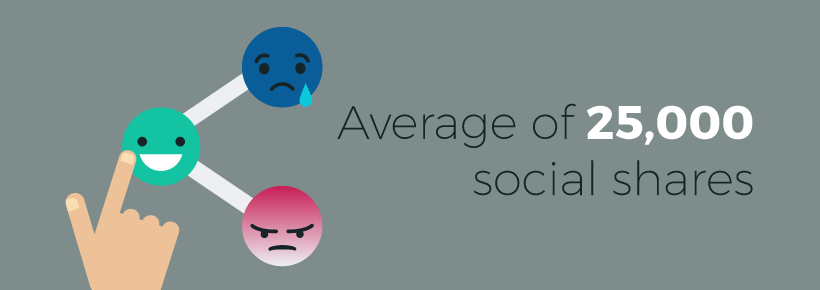
Emotionally charged, surprising campaigns stand out
Most marketers and content creators believe that if you can evoke strong emotions in consumers, then you are more likely to achieve your content goals. Despite this general understanding, it is rare to find quantifiable evidence that marketing and content creation that touches people on a deeper level leads to more successful campaigns.
Kerry Jones, director of marketing at Fractl, shared some thoughts about a recent study that shows how emotional connections correlate with the success of content marketing efforts. The study found that content that is either (1) emotional, (2) surprising, or (3) has broad appeal will garner more engagements than content that lacks these characteristics.
The good news for content creators is that a concentrated effort can help you create and publish content that falls within one or more of these categories. So, if your content is lacking a little something, consider the following:
Let your emotions out
Whether they know it or not, people want to connect on a deeper level with the things they engage with. In a YouTube video, marketing consultant Neil Patel spoke about the importance of including emotions in your marketing efforts.
“Virality is all about emotions,” Patel said.” “If you can evoke emotions in people, you are much more likely to have content go viral.”
Fractl’s study backs up this claim. The study of nearly 760 content marketing campaigns found that campaigns that feature an emotional hook received an average of 127 percent more shares than campaigns that didn’t feature an emotional tie. The report also lists three tactics that are particularly effective at helping content spread. These include:
- Focusing on positive emotional responses.
- Pairing contrasting emotions.
- Using the element of surprise if you must arouse negative feelings, such as fear or anger.
Surprise, surprise
Speaking of surprises, content marketing campaigns that feature an element of surprise garnered 108 percent more social shares than campaigns that were not surprising. Lest you think that your videos need to be Hitchcock-esque to pull off the element of surprise in your content marketing efforts, remember that mentioning or explaining something new or novel also can be “surprising.”
In a world where many marketing campaigns lack creativity, making a conscious decision to provide content that is unique or unexpected can set brands apart, as the study clearly found.
Something for everyone
Marketers and content creators are forced into trade-offs when determining audiences. Those who create content for niche audiences run the risk of alienating others. Those who create for broader audiences need to have content that strongly resonates, as there is more competition in this sphere.
The study found that content marketing efforts with broad appeal may not move the needle much on their own, but when partnered with content that is emotional and surprising, the campaigns with broad appeal earned an average of 25,000 social shares. In a nut shell, including all three elements effectively supercharged the campaigns.
People are using Facebook for 50 million hours per day less than last quarter, but CEO Mark Zuckerberg says the drop is all part of the plan of improving the user experience. The key to decreasing time spent on the channel? Fewer viral videos in news feeds.
Instagram Stories now will allow advertisers to triple the length of “story” ads. Advertisers will be able to include up to three photos or short videos in the ads that appear amid other stories.
KFC’s “Dancing Chicken” commercial was the most complained-about ad in 2017. The U.K.’s Advertising Standards Authority received hundreds of complaints, claiming that the ad was distressing to vegans, vegetarians and children.
Instagram is (finally) allowing brands to schedule posts. By opening up its API, Instagram has made it possible for third-party apps to have access to publish scheduled posts, but brands still are not able to schedule posts in the app itself.










